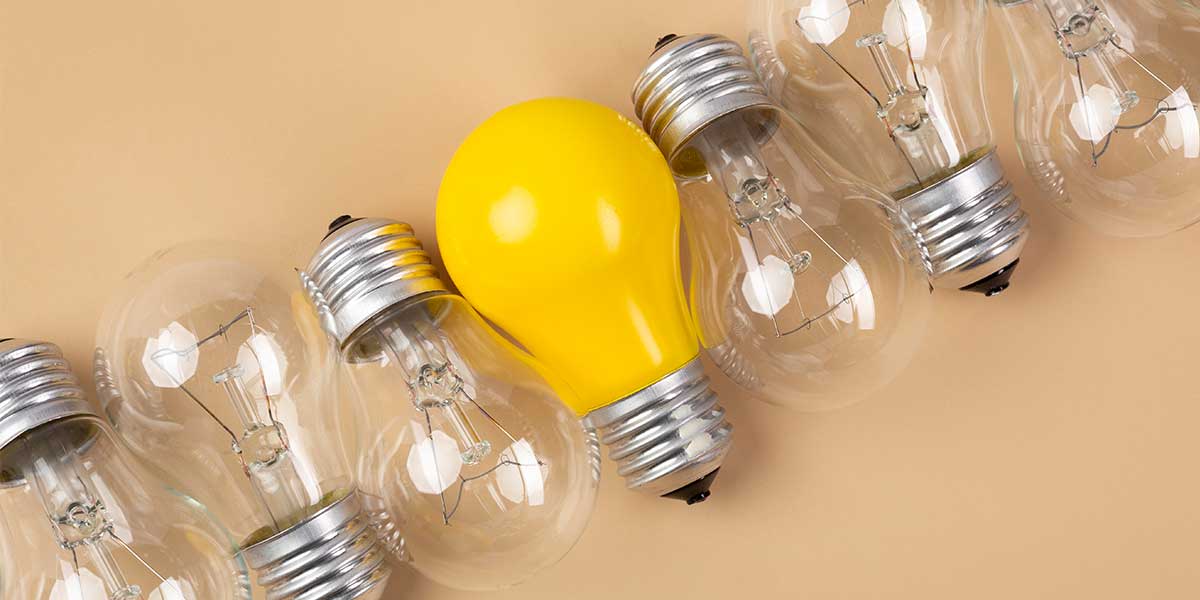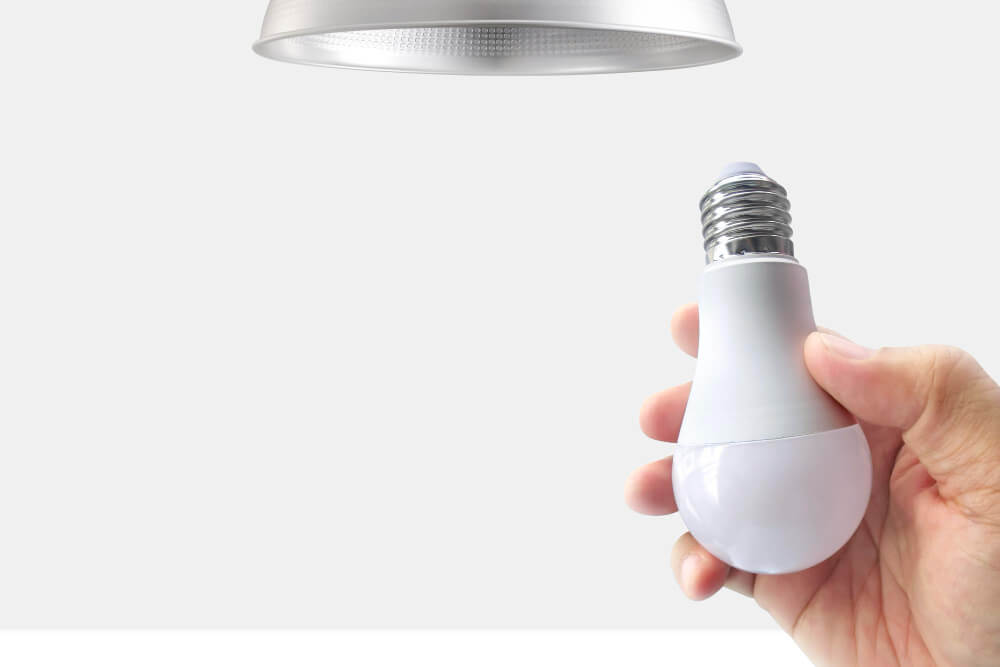Switching from incandescent or CFL bulbs to modern LED bulbs is one of the smartest upgrades you can make in your home. Not only do LED bulbs save money on energy bills, but they also last longer, give off less heat, and provide flexible lighting options for every room. Still, figuring out how to choose the right LED bulbs for your home can feel overwhelming, there are so many sizes, colors, and brightness levels to choose from.
At Expert Electric, we help homeowners across BC make smart choices about electrical upgrades, from lighting installations to full rewiring projects. In this guide, we’ll walk you through everything you need to know about LED bulbs: how they work, what the labels really mean, and how to choose the perfect bulbs for your fixtures and lifestyle.
Why LED Bulbs Are the Best Choice for Homes
Before diving into the “how,” let’s look at why LED lighting has become the gold standard for residential use:
-
Energy Efficiency – LEDs consume up to 80% less energy than incandescent bulbs. That means significant long-term savings on your power bill.
-
Longer Lifespan – While an incandescent bulb might last 1,000 hours, many LED bulbs last 25,000 hours or more.
-
Lower Heat Production – LEDs stay cool to the touch, making them safer and reducing heat buildup in your home.
-
Versatility – Available in every size, shape, and color temperature, LED bulbs can fit virtually any fixture.
-
Eco-Friendly – Less energy use means fewer greenhouse gas emissions. Many LEDs are also recyclable.
If you’re ready to upgrade your home lighting, here’s how to choose the right LED bulbs for your home, step by step.

1. Understand Color Temperature: Warm vs. Cool
When most people shop for LED bulbs, the first thing they notice is the “warm” or “cool” label. This refers to color temperature, measured in Kelvins (K).
-
2700K–3000K (Warm White) – Cozy, yellow-toned light. Great for living rooms, bedrooms, and dining areas.
-
3500K–4100K (Neutral White) – Balanced light, often used in kitchens, bathrooms, or hallways.
-
5000K–6500K (Cool White / Daylight) – Bright, bluish light. Perfect for offices, garages, or task-heavy spaces.
Pro Tip from Expert Electric: Use warmer lighting in relaxing areas (like your living room) and cooler lighting where focus is needed (like your kitchen counter or workspace).
2. Focus on Lumens, Not Watts
Old-school bulbs were measured in watts, but watts only tell you how much energy a bulb uses, not how much light it gives off. With LEDs, lumens are the real measure of brightness.
Here’s a quick conversion table to help:
-
40W Incandescent ≈ 450 Lumens LED
-
60W Incandescent ≈ 800 Lumens LED
-
75W Incandescent ≈ 1,100 Lumens LED
-
100W Incandescent ≈ 1,600 Lumens LED
So, if you’re replacing a 100W incandescent bulb in your living room, look for an LED bulb with around 1,600 lumens for the same brightness level.
3. Match the Bulb to the Fixture
Not every LED bulb works in every fixture. This is one of the most overlooked factors in choosing bulbs.
-
Enclosed Fixtures (ceiling domes, outdoor lanterns) – These trap heat, so you’ll need LED bulbs rated for enclosed spaces. Otherwise, the bulb may overheat and fail early.
-
Recessed Lighting – Choose dimmable LEDs designed for can lights to prevent flickering.
-
Table & Floor Lamps – Most standard LEDs work fine, but check socket size.
-
Outdoor Lighting – Look for wet-rated or damp-rated LED bulbs for safety and durability.
Expert Electric Reminder: Always check the packaging, manufacturers clearly list where bulbs should or shouldn’t be used.
4. Read the Label Before You Buy
The packaging on LED bulbs contains all the information you need, if you know how to read it. Look for:
-
Lumens – Brightness level.
-
Kelvins – Color temperature (warm, neutral, or cool).
-
Watts – Energy usage.
-
Estimated Yearly Energy Cost – Helps you compare savings.
-
Lifespan (in hours) – Indicates how long the bulb should last.
-
Dimmable or Non-Dimmable – Not all LED bulbs are dimmable, so check before buying.
By reviewing the label, you’ll avoid mismatched lighting and get the right bulb the first time.
5. Consider Smart LED Bulbs
Beyond standard LED bulbs, smart LEDs are becoming popular. These can connect to Wi-Fi or Bluetooth and be controlled by apps, smart speakers, or even your phone.
-
Color-changing options let you adjust your lighting mood instantly.
-
Voice control through Alexa, Google Home, or Apple HomeKit adds convenience.
-
Scheduling features can reduce energy costs by ensuring lights aren’t left on unnecessarily.
If you’re looking for a modern home upgrade, Expert Electric can help integrate smart LED systems into your home wiring.
6. Think About CRI (Color Rendering Index)
Many homeowners overlook CRI, a measure of how accurately a light shows colors.
-
80+ CRI – Good for most home applications.
-
90+ CRI – Excellent for spaces where color accuracy matters, like kitchens, studios, or closets.
High-CRI LED bulbs can make your walls, artwork, and even your clothing look more vibrant.
7. Choose the Right Shape and Base
LED bulbs come in many shapes and socket sizes:
-
A19 – The classic bulb shape for lamps and ceiling lights.
-
BR30/BR40 – Flood-style bulbs for recessed lighting.
-
Candelabra (E12 base) – For chandeliers or decorative fixtures.
-
PAR Bulbs – For directional lighting and outdoor floodlights.
Always check your fixture requirements before buying.

FAQs About Choosing LED Bulbs
Q: Are LED bulbs worth the cost compared to incandescent or CFL bulbs?
A: Yes! While LEDs cost more upfront, they use less energy and last much longer, saving you money over time.
Q: Can I use LED bulbs in dimmer switches?
A: Only if the bulb is labeled as dimmable. Standard LEDs may flicker or not work properly with dimmers.
Q: Do LED bulbs really last 25,000 hours?
A: In most cases, yes, if used properly and in the right fixture. Heat and poor ventilation can shorten lifespan.
Q: Are LED bulbs safe for outdoor use?
A: Yes, as long as they are rated for damp or wet locations. Check the packaging before installing.
Q: Can LED bulbs help improve my home’s resale value?
A: Absolutely! Energy-efficient upgrades like LED lighting are attractive to buyers looking for modern, eco-friendly homes.
Final Thought
Choosing the right LED bulbs isn’t just about picking the brightest option, it’s about matching the bulb to your space, fixture, and lifestyle. By understanding lumens, color temperatures, fixture compatibility, and label details, you can create a customized lighting plan that improves both comfort and efficiency in your home.
If you’re ready to upgrade your home lighting or need expert guidance, the team at Expert Electric is here to help. From installing smart LED systems to ensuring safe wiring in older homes, we bring decades of experience to every project.
Contact Expert Electric
Ready to transform your home with energy-efficient LED lighting? Contact us today:
-
📞 Call Us: 604-681-8338
-
📧 Email: info@expertelectric.ca
Let’s light up your home the right way, safe, smart, and efficient.


